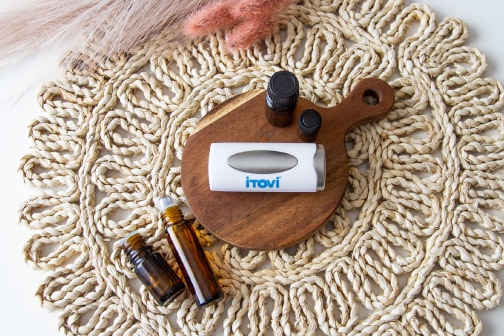
“Exercise is a celebration of what the body can do, not a punishment for what you ate.” — Kevin Ng
Time to change the way we think about exercise.
Step away for a moment from all the dread, guilt, shame, or disappointment that you may feel (and that pervades our society) surrounding exercise. Let go of all the body expectations, fitness fads, and grind culture.
And focus on your body.
Take just a moment and let your consciousness sink down into your body. What do you feel? Stretch your limbs a bit. Roll your shoulders and head. Flex your hands and feet. Feel your muscles and tendons. Enjoy the pleasure of connecting to your body. If a little pain or discomfort comes, notice and embrace that as well. Listen. Your body is speaking to you. Exercise has simply allowed you to tune in.
The Importance of Exercise
Exercise is indispensable for wellness. It helps keep just about all of your body’s systems healthy—nervous system, immune system, digestive system, endocrine system, etc. It builds your bone density and strengthens your muscles, including your heart (which needs special care). Exercise enormously impacts your daily mental and emotional health, output, and ability to manage stress. And all of that is to say nothing of feeling and looking fit!
Along with regular, high-quality sleep and regular, well-balanced nutrition, exercise is one of the most important foundations for your daily and lifelong wellness, such that few things will do more to improve your quality of life than a regular, balanced exercise habit.
Challenges to Exercise
From our very first kicks in the womb and adorable stretching of baby arms—we were all designed by nature to “move it, move it”! However, despite Reel 2 Real’s enthusiasm, we don’t always like to “move it, move it”!
Too many people carry feelings of dread, guilt, shame, or disappointment when it comes to exercise. Certain brain mechanisms (which we will discuss) make it difficult to start exercising.
What’s more, many people approach the idea and act of exercising with the wrong motives, mindsets, or systems that ultimately hamper rather than help their ability to maintain a regular, healthy exercise habit.
In this guide, we’re here to discuss it all—the challenges of exercise, how to recognize and overcome specific exercise-related issues, how to warm up, how to organize a balanced exercise plan, how to recover, how to exercise according to your hormonal needs, how to use your iTOVi Scanner to support your exercise journey and more.
The Problem of Exercise Motivation
We’ve all been there. We make plans to exercise. The time comes and…we don’t wanna. The idea of exercising brings dread and maybe even nausea. We find an excuse (didn’t get enough sleep, can do it tomorrow, climbed a lot of stairs yesterday, etc.), roll over, and leave the battle to be fought another day.
Sometimes an accountability system, a tempting reward, a desperate desire to fit into our old jeans, or some other external/extrinsic factor can overcome our lack of motivation for a little while. Sometimes. But all too often, this “motivator” doesn’t work for very long.
If we want to break this pattern and motivate ourselves to exercise, there are a few key things we should understand:
Intrinsic vs Extrinsic Motivation
Not all forms of motivation are created equal. And this is especially true when it comes to our habits.
Exercise habits are more likely to fail if they are fueled by extrinsic motivation rather than intrinsic motivation. What’s the difference? Extrinsic motivation is motivation that relies on something external to you. Many try to motivate themselves to exercise through an outside force or result—a close gym buddy, a reward, a refrigerator chart, app reminders, a thumbs up from your doctor, a lower number on the scale, a picture of a model in the swimsuit we wish we could wear, etc.
Basically, with extrinsic motivation, you do the task—in this case, exercise—for an outside reason.
Intrinsic motivation is motivation that relies on the enjoyment/fulfillment of the task itself. There are things we do just because we enjoy doing them! Children are great examples of this. They run around because they want to run around. They draw because they like to draw. They sing because it feels good to sing.
The best way to exercise and nail down a habit of exercising, is to enjoy exercising!
It’s not just choosing a way of exercising that is most enjoyable or least abrasive (though that can help, especially for beginners). It’s about learning to connect to your body and enjoy exercise primarily as a way to connect with your body rather than as a way to get fit, stave off punishment, or meet an external goal.
When we approach exercise in this way, it is natural to start slow, warm up, and only push ourselves as far as our body wants to go/as far as is good for us.
The best thing extrinsic factors can do for us is perhaps remind us to get started. But that’s all. The extrinsic should remind us, not motivate us.
The Energy Cost
Your brain has an incredible capacity to measure your stress levels and then factor that into decision-making when it comes to energy expenditure. Trouble is—this sometimes gets in the way of our ability to exercise!
Here’s what happens. Whenever you consider taking an action (i.e. climbing up a hill, organizing your desk, turning on a sitcom), your brain does a quick calculation for how much overall energy it will cost your body to do that entire task. Not just part of it. All of it.
This can cause our brains to look at an entire exercise activity and think–yikes! That would take a lot of energy! And from there, to preserve energy, your brain will hijack your senses, making that hill look steeper than it actually is, making the task seem harder so we won’t do it (article here).
The trick is to remember that we don’t have to do the entire task (i.e., give up all the required energy) all at once!
If your brain and body panic at the idea of an exercise session, just get your mind to focus on one step at a time (see activity below). Putting on your shoes? You have energy for that! Warm-up stretches? You have the energy for that! Walking the first five yards? You can do that too!
Your energy will build as you go and you’ll find that you can do the entire thing!
Learn the art of the warm-up! Don’t think about the whole task, just the next step. And remember—be mindful and try to intrinsically enjoy each step!
The Misunderstanding of Intensity
Exercise should not equal misery.
If you’re pushing yourself to the point of exhaustion, nausea, or side-stitching pain—you’re likely training too hard or at least aren’t warming up properly!
We’ll talk more about how to warm up and how hard to push yourself in parts 2, 3, and 4 of this guide. But for now, just know that exercise should be done at reasonable intensities. Start with an easy warm-up, pay attention to your body, and it will tell you when it wants to up the intensity!
In part 2, we’ll talk more in-depth about exercise warm-ups!
Activity: Baby Step Action (5 min.)
Directions
Identify the immediate task/goal you want to accomplish, even if it seems overwhelming at the moment (i.e., do your morning workout, begin X project, clean the kitchen, etc). Once you’ve chosen your task, deliberately turn your mind towards identifying the tiniest baby step you can make towards your goal, and then, with an air of semi-mindfulness, do it. Then identify and do the next baby step. Don’t be afraid to feel a small sense of accomplishment with each couple of “baby steps” you take. Commit to not stop “baby stepping” for at least five minutes.
i.e. Exercising
Baby step 1- Take a deep breath
Baby step 2 – Sit up
Baby step 3 – Put your feet on the floor
Baby step 4 – Stand
Baby step 5 – Look for tennis shoes
Baby step 6- Walk towards tennis shoes
etc
How Does This Support Me?
When we mentally consider an action, we often subconsciously count the energy cost of that action. This can lead to overwhelm and giving up if we think about doing too much at once—the whole workout, the whole project, etc. Baby steps allow us to hack the energy-cost-calculating mechanism of our mind, allowing us to get started and discover along the way that we have more energy and endurance available to us than we felt we had access to at the start.




